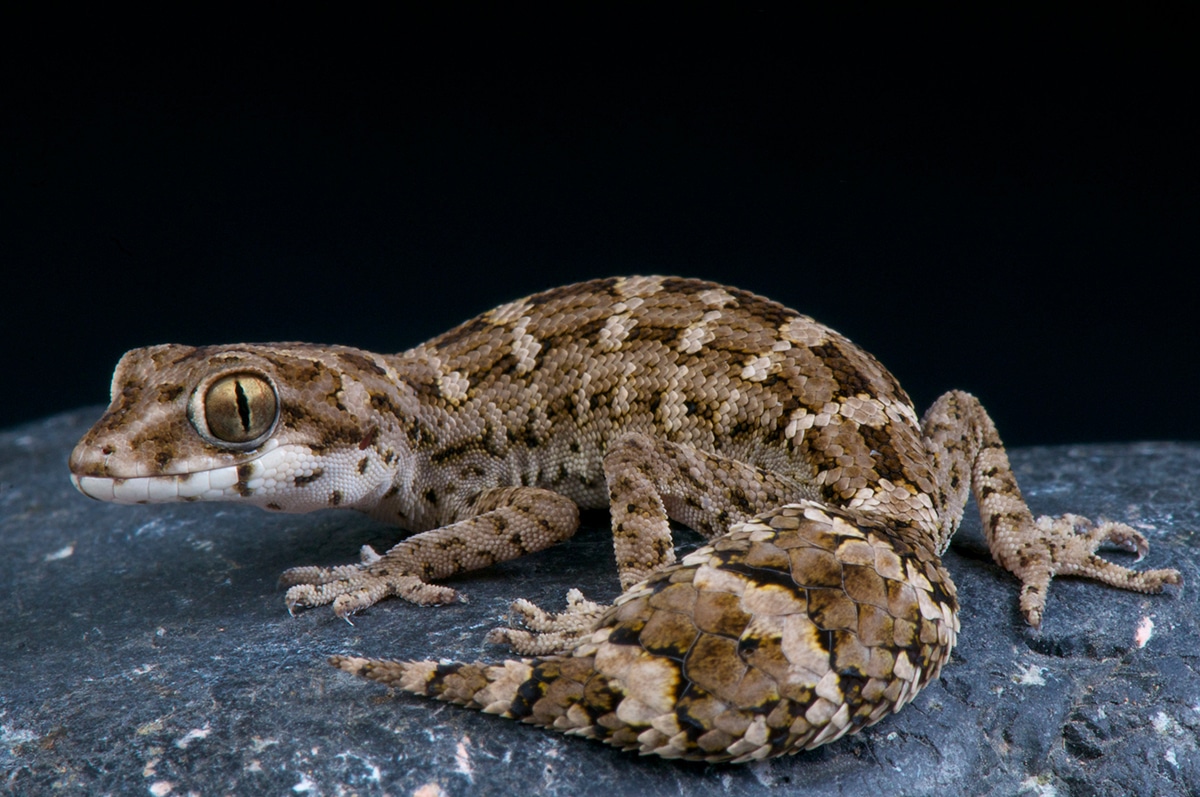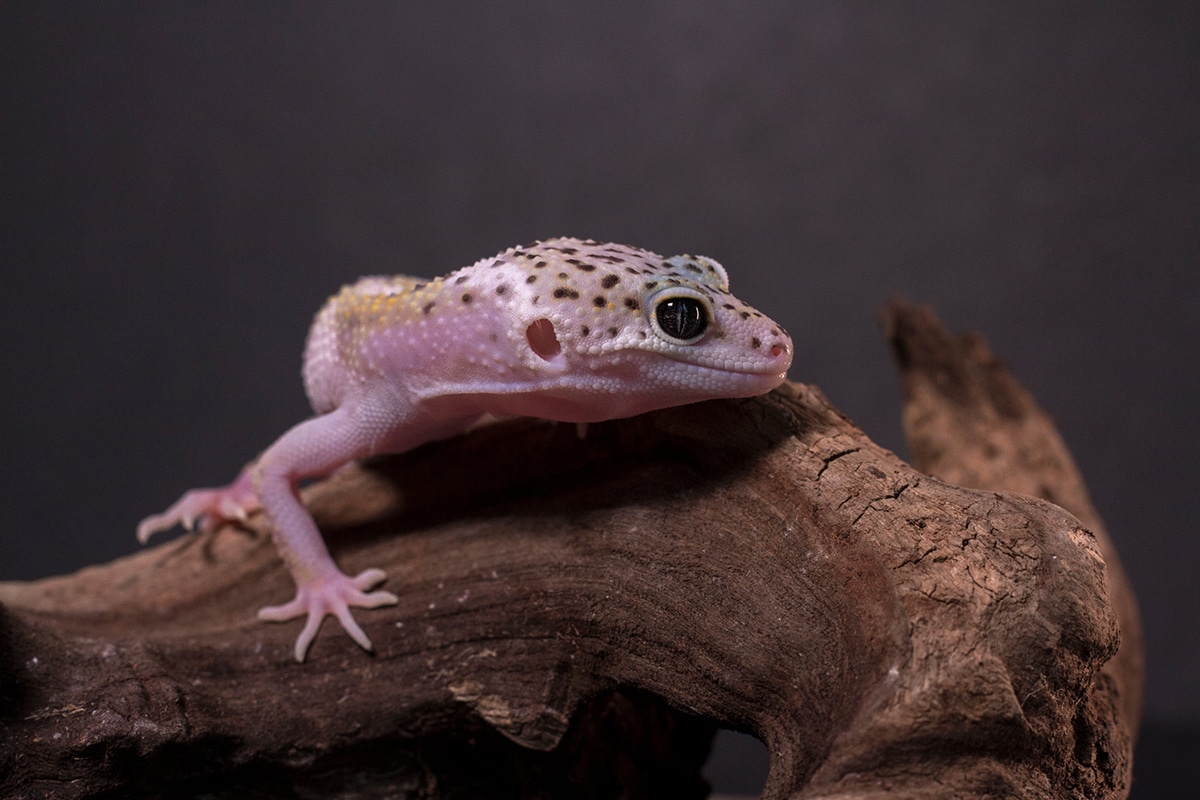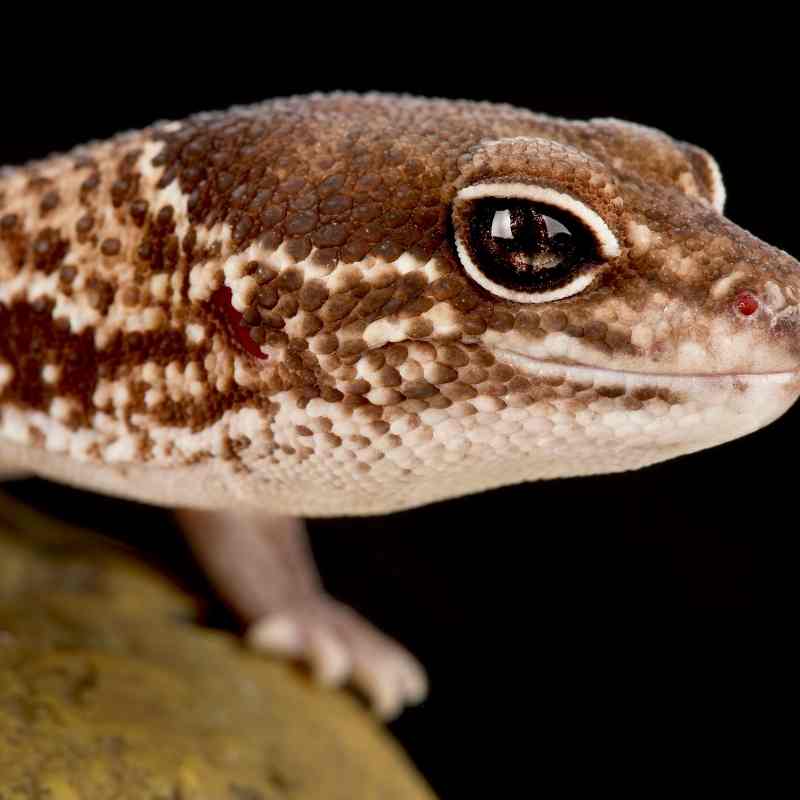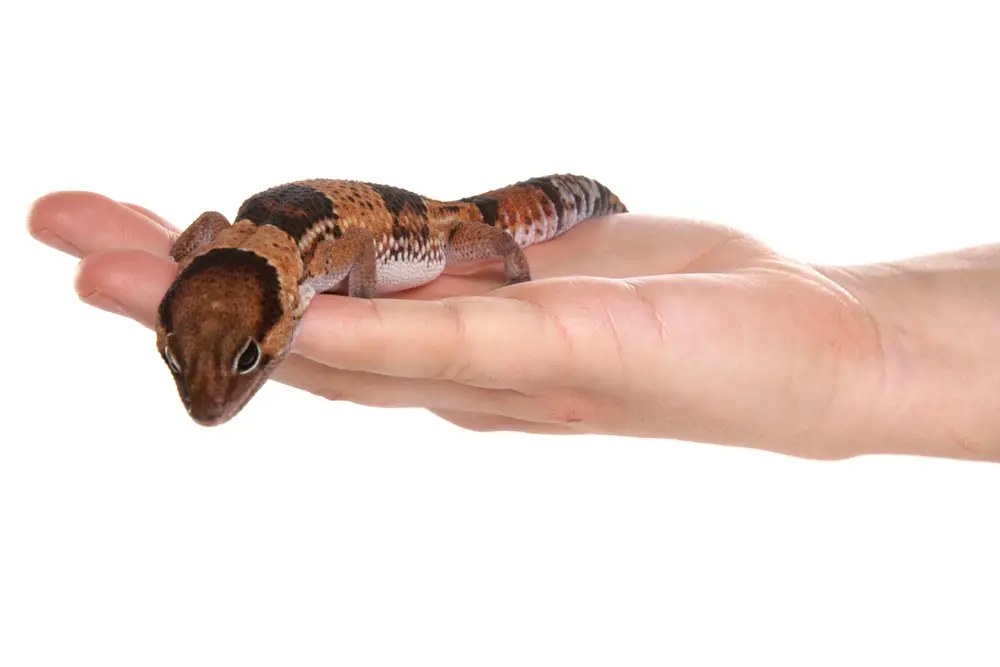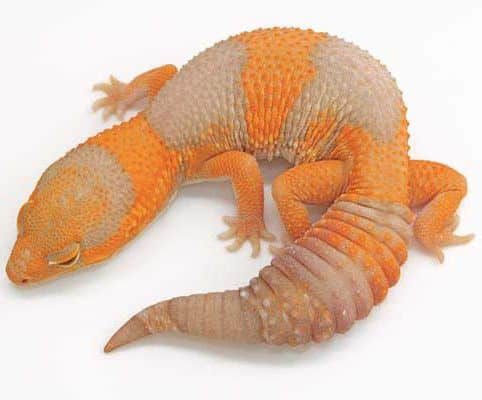African Fat-Tailed Gecko Shedding Skin (Complete Guide)
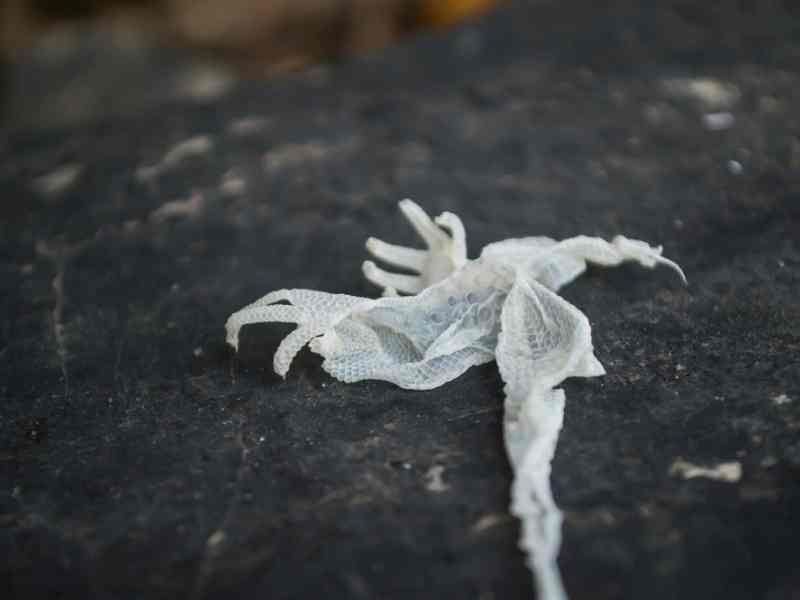
You’re undoubtedly here because you’re worried about your African Fat-Tailed Gecko. Why are they turning white? How long is shedding supposed to take? Do I need to help them? I get it, it’s scary when something apparently inexplicable is happening to your pet and you want to make sure nothing is going wrong, like a responsible gecko owner.
Don’t worry! In this article, I’ll try to answer some of the most common questions owners have about their fat-tailed gecko during their shedding time.
Contents
Why is My Fat-Tailed Gecko Turning White?
To kick us off, why is your gecko turning white at all? Well, Much like Leopard Geckos, the African Fat-Tailed Gecko turns white because it’s beginning to shed. Who could have guessed?
Geckos, like many reptiles, will have their top layer of skin begin to pull away from their body as the fresh layer of skin grows beneath it. Slowly but surely, the rest of the layer comes off, making your gecko whiter and whiter, until it finally pulls away completely.
If you’re experiencing your first molting with your gecko, it’s usually nothing to worry about. Later on, we’ll go over when it can become dangerous for your gecko. You can look forward to your young geckos shedding very often until they reach adulthood. After that, African Fat-Tailed Geckos will begin their molting period every 2 – 4 weeks.
Is it Normal for Geckos to Shed?
It is natural for geckos to shed their skin, including African Fat-Tailed Geckos. Although, if we’re being accurate, they aren’t necessarily shedding their skin but the protective epidermis layer on top.
The reason your gecko is shedding is that it’s growing, to the point where it has outgrown its current skin size and needs a bigger one.
In the wild, if a gecko is wounded, the shedding process also helps them to heal. Another common reason is if they find themselves plagued with pests. If they have parasites on their skin, shedding it off is an effective way to get rid of them.
What is the Shedding Process for the African Fat-Tailed Gecko?
You will first notice the shedding process for your adorable African Fat-Tailed Gecko when they start looking “dusty.” They start becoming duller in their coloring and look like they rolled in flour as their old skin begins to get dryer.
Gradually, your gecko will turn white completely from head to toes as the old skin dries, and the new skin secretes a fluid to help separate the old skin from the new skin.
Your gecko will shed its skin all at once, like a snake does, instead of in flakes like other reptiles. Once it’s time to shed the epidermis, it will take your wide-eyed friend about half an hour to peel it off entirely.
Does it Hurt Geckos to Shed?
Shedding is an absolutely painless phenomenon for a gecko. It might be a little itchy, but other than that there’s nothing to cause them discomfort because the old skin is naturally separating itself from the gecko’s body.
In some cases, however, your gecko can get hurt if their old skin refuses to come off. Whatever part the old skin stays on, it can get tight and cut off circulation to that area. Their toes in particular are vulnerable to this and can drop off before you notice anything wrong. In mild cases, your gecko will sort it out, but it will have a scratch.
Should You Help Them Shed Their Skin?
Your gecko is usually more than capable to shed on its own without your help. However, when occasions come where you notice that your gecko still has old skin attached to it, it might be because their enclosure is too dry. To help your little friend along, it’s advised to spray some water as a mist into the enclosure during the evening, which usually does the trick.
You can tell if you have to intervene and adjust the humidity by looking at your gecko’s toes in particular. If the skin is sticking to your gecko’s feet the humidity is below 40%. You can free their toes by giving them a little gecko a foot bath with half an inch of water for approximately 10 minutes.
Naturally, any part that has the old skin on it too long will be potentially at risk. If your gecko can’t reach these sections or just isn’t eating its old skin, you can help them by creating a lizard’s version of a Turkish bath.
Put them in an enclosure, like a shoebox, that has warm water up to the level of your critter’s underbelly, and lots of holes on the top for ventilation. Add more warm water to replace the old cold water about every 15 minutes and use your hand to splash some water onto their bodies. Just don’t get any water in their eyes. Your gecko should stay in the box for about 2 hours.
Whatever you do, DO NOT PULL THE SKIN OFF FOR THEM! Taking off skin that isn’t ready to come off will only hurt your gecko. Sometimes severely.
Can You Still Hold Them When They Shed?
It’s not advised to hold your gecko while they’re shedding. The main reason for this is the same reason why you shouldn’t pull off their old skin to help them shed: you can seriously hurt your gecko.
One example was told by Supreme Gecko. The owner of a leopard gecko tried to help it get the old skin off its mouth but hurt him so badly by doing so that he had trouble eating afterward.
Your gecko might also be in a bad mood because of his or her shedding and not in the mood to be picked up and handled. If you do, you risk stressing them out and biting you.
What Does it Mean When They Shed too Much, Too often?
The most common reason why your gecko is shedding a lot is that they are still growing a lot. This is if your gecko is a young one, of course. They could shed as often as once a week.
Don’t worry about doing anything about it. Just let it happen. You do need to be concerned if your gecko refuses to eat long after the shedding is finished. It’s okay if they don’t eat the day of or the day after, but much longer than that could indicate that there’s something wrong.
Why do Geckos Eat Their Shed Skin?
I know this seems like unhealthy or weird behavior, but it’s perfectly natural and even practical for your colorful lizard to do this.
If it’s your gecko’s first time shedding, it probably hasn’t eaten before or during the process, and in its hunger, eats the skin it just shed off. This also gives your gecko an appetite for its skin in future sheddings.
In future sheddings, your gecko won’t feel like eating because the old skin around their mouth makes eating a tad inconvenient. However, since their skin has nutrients, they’ll eat their shed skin to regain some of the nutrients they lost while they were fasting.
Since geckos are also native wildlife as well as cool pets, it’s possible that they eat their skin because it’s a meal they don’t have to hunt for and because it doesn’t leave something a predator can use to track them down.
Conclusion
I hope this article helped clear things up about your fat-tailed gecko’s shedding cycles and when you should be worried. Now that you know more, enjoy your colorful companion knowing what you have to look out for.
